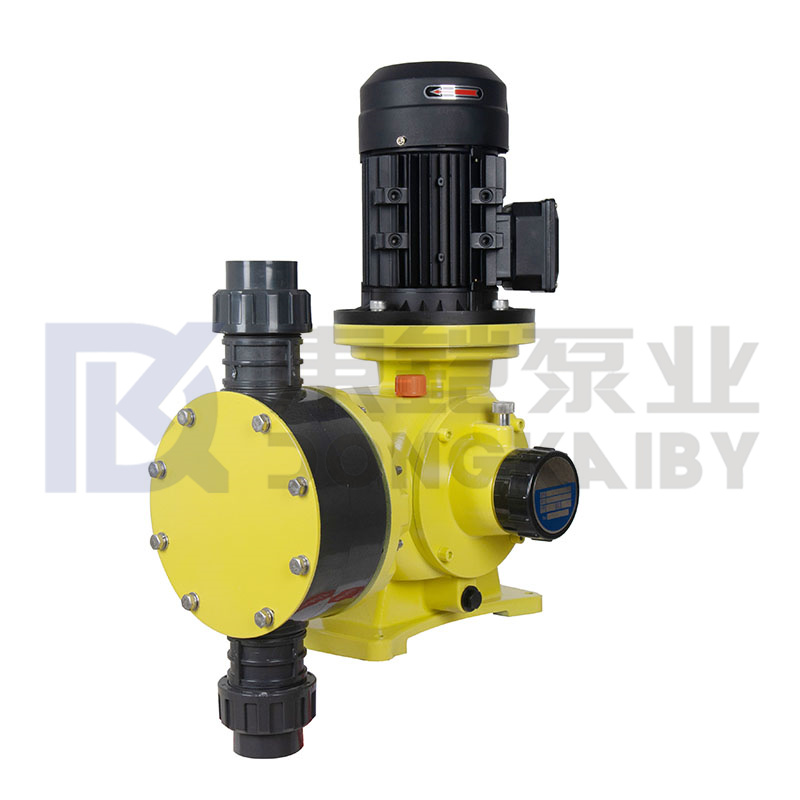- English
- Español
- Português
- русский
- Français
- 日本語
- Deutsch
- tiếng Việt
- Italiano
- Nederlands
- ภาษาไทย
- Polski
- 한국어
- Svenska
- magyar
- Malay
- বাংলা ভাষার
- Dansk
- Suomi
- हिन्दी
- Pilipino
- Türkçe
- Gaeilge
- العربية
- Indonesia
- Norsk
- تمل
- český
- ελληνικά
- український
- Javanese
- فارسی
- தமிழ்
- తెలుగు
- नेपाली
- Burmese
- български
- ລາວ
- Latine
- Қазақша
- Euskal
- Azərbaycan
- Slovenský jazyk
- Македонски
- Lietuvos
- Eesti Keel
- Română
- Slovenski
- मराठी
- Srpski језик
Structure and principle of the Mechanical diaphragm metering pump
2022-02-23
The pump consists of two parts: the transmission end and the hydraulic end (pump head).The output flow of the pump depends on the stroke speed of the transmission end, the diameter of the diaphragm (pump head) and the stroke length of the diaphragm.When the pump is running or stopping, the stroke length can be changed by adjusting the stroke adjustment handwheel. The transmission mechanism works according to the principle of variable eccentric mechanism, that is, the motor rotates to drive the worm gear to decelerate, and the worm gear deceleration component drives the variable eccentric crankshaft to rotate. The adjustable eccentric crankshaft transmits reciprocating motion to the diaphragm through the connecting rod, which causes the diaphragm to flex and deform. The stroke length can be adjusted by changing the position of the variable eccentric crankshaft on the connecting rod.During the suction stroke of the pump, the diaphragm starts to move backward, and the pressure in the pump head immediately decreases. When the pressure of the pump head is lower than that of the suction pipe, the ball of the suction check valve is pushed upward, and the medium in the inlet pipe enters the pump head chamber.When the suction stroke is over, the diaphragm motion stops instantly, the pressure in the pump head is equal to the pressure in the suction line, and the suction check valve ball resets.
During the discharge stroke of the pump, the diaphragm begins to move forward, and the pressure in the pump head immediately rises. When the pressure of the pump head is higher than that of the discharge pipeline, the check valve ball of the discharge port is pushed upward, and the liquid in the pump head enters the liquid outlet pipeline. When the stroke of the discharge port is over, the diaphragm stops moving again instantly. The pressure in the pump head is the same as that in the discharge line, and the discharge check valve ball is reset before the next cycle starts.
During the suction stroke, the pressure in the pump head must be higher than the vapor pressure of the material. If the liquid pressure is lower than its gasification pressure, cavitation will occur, which will affect the performance of the pump.



